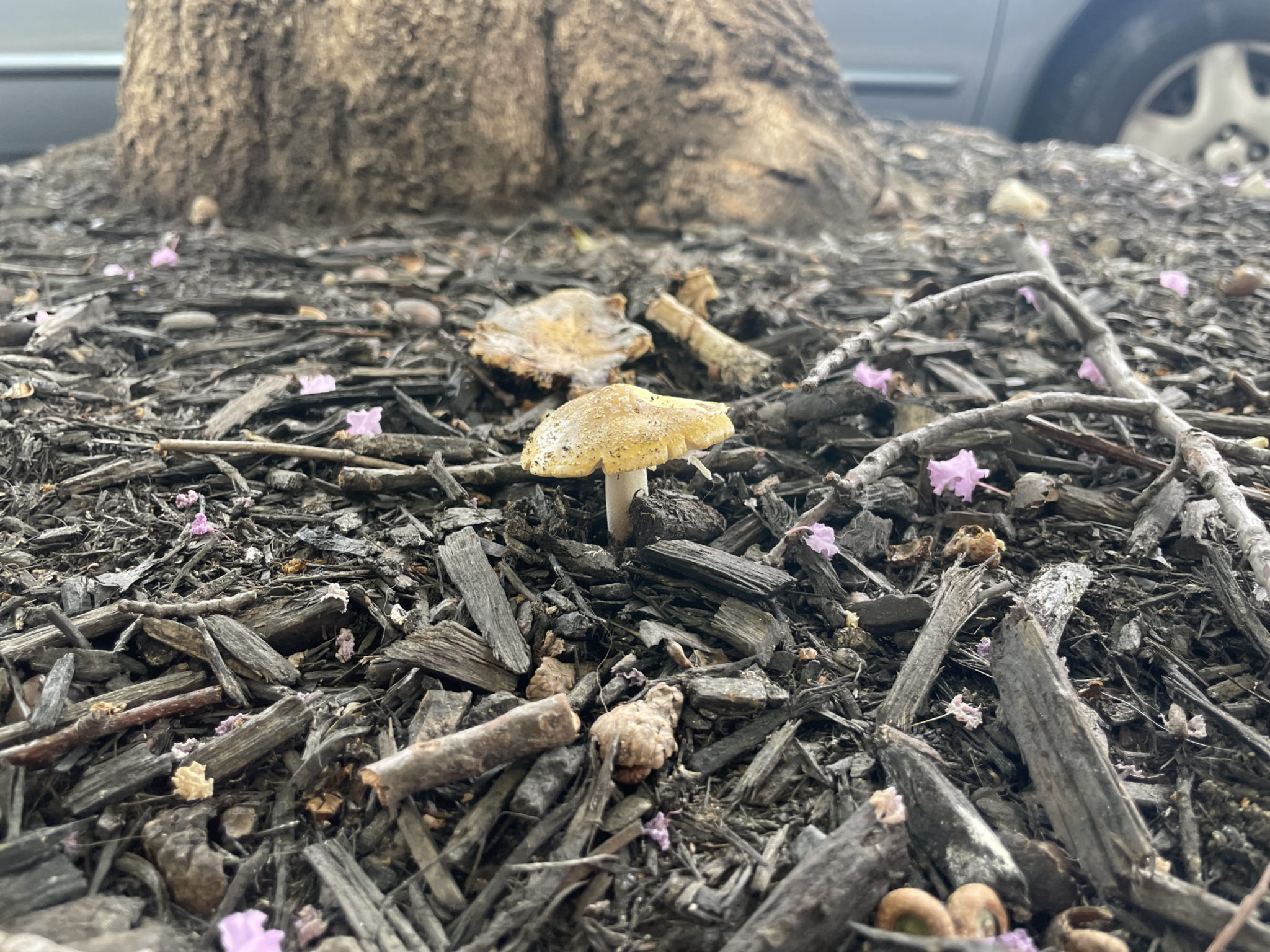Perhaps you’ve noticed a sudden burst of fungi in your garden. Or maybe you’re wrestling more mushrooms away from the dog. Whether it’s in a yard or on a roadside tree bed, there seems to be a sudden influx of mushrooms sprouting around DC.
“My hypothesis is it’s this combination of intense storms, downed plant material, and strong rain,” says Priscila Chaverri, a mycology professor at Bowie State University.
According to the Washington Post, July was DC’s 25th wettest and 15th hottest month on record, and August is projected to follow a similar weather pattern. While humans might not enjoy the sticky climate, it can be ideal conditions for mushrooms to grow, says Chaverri. (Hey, at least something can thrive during DC’s humid summers.)
Fungi are also being spurred by recent thunderstorms with high winds that uprooted trees. Those storms brought down branches, and the fresh nutrients in the collapsed trees made for good fungus food, says Chaverri.
So, does this mean there are more mushrooms this year? Not necessarily—you might just be seeing more of the organic umbrellas suddenly popping up right now. “Things changed when, about a month ago or so, we started getting regular rain,” says Matt Cohen, treasurer of DC’s mycological association.
Early in the summer, the region underwent a drought that upended some of our local ecosystems—even the tap water tasted a little funky. The lack of precipitation also contributed to an absence of emerging mushrooms, but as soon as the rain returned, so did the ‘shrooms. “The water after a drought is a trigger to produce these fruiting bodies for a quick release of spores,” Chaverri says.
Looking to find some fungus? According to Chaverri, wait until a rainy day after a stretch of dryness, and then head to your local park. But, just like human Washingtonians, the mushrooms might choose to stay in a cooler spot if the temperature is too high.

















